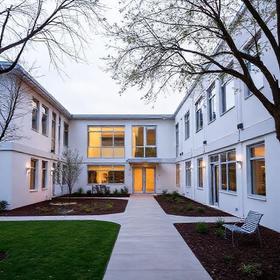Boarding School Myths Debunked (2025 Edition)
Choosing a boarding school is a major decision for families. Yet despite the growing number of students and evolving school models, many outdated beliefs persist. In this 2025 edition of “Boarding School Myths Debunked,” we revisit common misconceptions about boarding schools—cost, diversity, academic rigor, student independence—and update the record with the latest data, policies and real-world examples. Whether you are a parent, student, or educator, this article will help you separate fact from fiction in today’s boarding school landscape.
Myth 1: Boarding schools are unaffordable for all but the wealthiest families
Reality: While sticker prices remain high, financial aid and income-based models are making boarding schools more accessible in 2025.
Sticker tuition for full boarding often falls in the $60,000 to $80,000 per year range. For example, typical five-day boarding averages around $55,425, and seven-day full boarding averages about $69,150 nationally. Boarding School Review+1
At high-end schools:
The Lawrenceville School reports boarding tuition of $79,500 for 2024-25; about 34 % of students receive financial aid, with average boarding grants over $60,000. Wikipedia
Blair Academy lists 2025-26 tuition of $78,980, 36 % of students on aid, average boarding grant ~$54,896. Wikipedia
Moreover, many schools now use sliding-scale income caps and full-need policies. A notable example: Deerfield Academy offers free tuition to U.S. families earning under ~$150,000 and caps tuition at 10 % of income for those earning more. The Wall Street Journal
So the myth that boarding schools are universally unaffordable simply does not hold in 2025. With proper financial aid planning, many middle-income families find boarding school a viable option.
Tip for families: Always ask for the school’s actual average net cost after aid and whether there are income caps or sliding-scale models. The sticker price alone is not the full story.
Myth 2: Boarding schools are homogeneous, elite clubs with little diversity
Reality: Boarding schools are increasingly diverse—racially, socioeconomically and internationally—and many programs aim to broaden access.
While older statistics showed limited diversity, recent notes show a shift. For example, some boarding schools report more than 25 % international students and significant representation of students of color. Boarding School Review+1
According to a 2024-25 survey of independent schools, private school students are 65 % White in the earlier data; charter and public schools are notably more diverse. Pew Research Center
Beyond racial/ethnic diversity, the financial aid trends noted above also broaden socioeconomic representation. Schools offering strong need-based aid invite wider participation.
Additionally, many boarding schools now emphasize global engagement, offering exchanges, internships and partnerships to enrich their student bodies.
Tip for families: When reviewing a boarding school’s diversity, ask for current data on:
percentage of students receiving financial aid
racial/ethnic composition
international student population
socioeconomic range of families
Myth 3: Boarding school students are rigidly controlled and lose independence
Reality: Modern boarding schools emphasize student autonomy, leadership, and real-life readiness.
The stereotype of “students locked in dorms under strict supervision” is outdated. Many schools now structure campus life to build resilience, self-regulation and leadership.
For instance, ample examples show boarding students have structured free time, student-governed clubs, off-campus opportunities and supportive residential life staff. Academic environments often include choice in courses, project-based learning, and mentoring.
Parents seeking boarding school often find that the added structure (residential advisors, weekend programs) actually supports independence rather than limits it.
Tip for families and students: Visit the dorms, talk with current boarding students about weekend life and personal responsibility, and ask how student leadership is organized.
Myth 4: Day students get the same experience as boarders – so boarding is unnecessary
Reality: While day students certainly benefit from excellent academics, boarding students access unique advantages in immersion, community, and global opportunity.
Here are key differences in experience:
Residential life fosters 24/7 engagement—study halls, electives, weekend programming, and peer bonding.
Boarding students often participate in more leadership and extracurricular opportunities—because they live on campus and engage beyond class time.
Schools offering full boarding can cultivate deeper community, faster adaptation to non-home environments, and richer peer networks.
That said, day and boarding students often share the same academic faculty, resources and course offerings. The choice is less about academics and more about the lifestyle. For many families, day school might suffice; for others, boarding offers added dimension.
Tip for parent-students: Reflect on your child’s readiness for immersion (social maturity, time management, homesickness risk) and the family’s goals for high school. Boarding is a tool, not a guarantee of success.
Myth 5: Boarding schools guarantee college admission or elite outcomes
Reality: No school guarantees admission to elite colleges; outcomes depend on student effort, school-fit, and support systems. However, many boarding schools maintain strong academic preparation and college matriculation records.
In 2025, boarding schools continue to report strong college preparation: e.g., at one leading school the student-faculty ratio is 6:1 and over 450 courses are offered. College Transitions
Nevertheless, the reality is: institutional prestige matters less than student-school alignment, academic fit, and personal engagement.
Schools that support individualized learning, mentorship, robust guidance counseling and residential life tend to yield positive outcomes. But boarding school is not a “magic bullet” for elite college admission.
Tip for families: Evaluate schools on their graduation outcomes, college-acceptance trends, student support services, and the “fit” for your child—not just brand prestige.
Myth 6: Boarding schools are culturally isolated or outdated
Reality: Many boarding schools in 2025 are innovating: incorporating global curricula, STEM/AI, mental-health support, and flexible 5-day or “home-on-weekends” models to adapt to modern family needs.
Recent updates show schools expanding access and programming: for example, schools offering both five-day and seven-day residential options. Boarding School Review
Residence life now often includes comprehensive wellness programs, diversity/inclusion initiatives, and technology-rich learning environments to prepare students for a connected world.
Tip for families: Ask about:
the ratio of five-day vs seven-day boarding
recent curriculum enhancements (e.g., AI, sustainability)
mental-health/residential-life support
how the school integrates day, boarder and international experiences
What Parents, Students and Educators Should Do in 2025
Here are actionable steps to make the most of boarding-school research and decision-making:
Clarify your goals. Are you seeking independence, global exposure, academic rigor, or community living? Match your child’s personality and goals with school environment.
Dig into net cost, not just tuition. Ask for average financial aid, income caps, and actual average family contribution.
Visit the campus and dorms. Don’t rely only on online materials. Ask current boarders about daily and weekend life.
Examine residential life philosophy. How do advisors support students? What is the balance of structure vs freedom?
Check diversity, inclusion and global programs. In 2025, meaningful access and representation matter more than ever.
Confirm support services. Ensure robust academic advising, college-counseling, and wellness resources exist.
Maintain fit and flexibility. A school that aligns with your child’s temperament, interests and needs is more important than institutional prestige alone.
Final Word
Boarding schools in 2025 are not monolithic, inaccessible enclaves. They have evolved into dynamic, accessible institutions offering varied models, inclusive access and robust student-life experiences. The myths about cost, diversity, independence and outcomes often reflect old assumptions rather than current reality.
Ultimately, success depends on match, resources and student engagement rather than simply whether a school is “boarding” or “day.” Use the more accurate, updated data above, ask the right questions, and you will be better positioned to decide whether a boarding-school experience aligns with your family’s goals.











